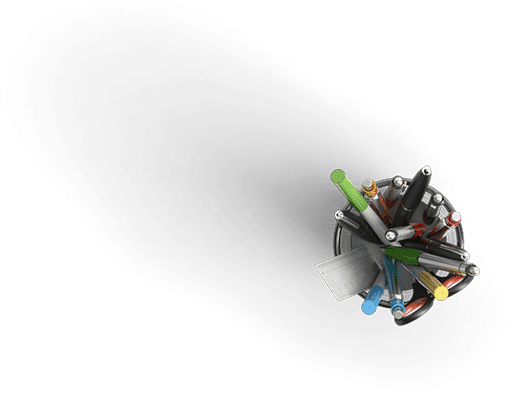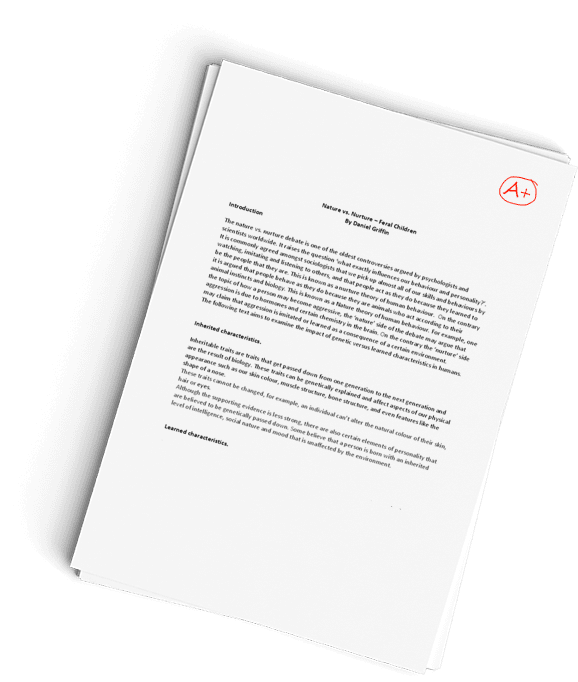Odessa Freuds Psychosexual Development Theory Against Eriksons View Case Study
Question Description
No-Longer-a-Teen-Development-in-Young-Adulthood-PPT
(Week Six Class Presentation_ Adulthood.pptx5).pptx
-
Perspective Paper 2: Adulthood
As you’ve learned, we divide the study of lifespan development into three broad categories: conception through childhood, adolescence, and adulthood to death. In this assignment, you will be looking at the first broad category, which is adulthood, and applying your research to compare and contrast two of the lifespan theorists. Later in this course, you will have this assignment again but applied to the other broad categories. NOTE: If you have taken this course previously or completed this capstone assignment in another course you can NOT resubmit your original paper. I do not allow recycled papers for this assignment.I will evaluate your sources if the plagiarism report is over 20% for the written content not including references). Be sure to write in your own words and provide in-text citations and references in APA format. Step One:Please choose two theorists from the list below. You may select different theorists or keep these for the subsequent assignments.
- Freud’s psychosexual stage theory
- Erikson’s psychosocial stage theory
- Kohlberg’s moral understanding stage theory
- Piaget’s cognitive development stage theory
- Bronfenbrenner’s ecological systems theory
Step Two:Research your selected theorists. The embedded text in this course will help, and you may also use resources from the approved list of websites given to you in your syllabus:Websites: Here is an approved list of websites that you are allowed to use for research: .edu and .gov may also be used but be aware of student papers
- www.apa.org
- www.eric.ed.gov
- www.plos.org
- www.scholar.google.com (note that the actual source will still be something else listed in google scholar)
- www.omicsonline.org
- https://www.odessa.edu/current-students/Learning-Resources-Center-Library/Super-Search/index.html
Banned Websites: Please do NOT use the following websites for any research paper or to fulfill the scholarly reference requirement. Points will be deducted if these sources are used. .net or .com should also never be used! These are NOT scholarly resources:
- Simply psychology
- About psychology
- Wikipedia
- Psychology Today
- Psychologynotes
- Spark Notes
- Cliff Notes
- Verywellmind
- Paper Generators
- Britannica
- Webster
Step Three:Use the template to write your paper. Be sure to include the exact headings provided as they clearly distinguish between the sections you discuss! You will need a title page as shown.Other important things to note:
- This assignment is a WORD document that is attached and submitted through safe assign (check the plagiarism tool box before hitting submit). pdf or other document types will NOT be accepted.
- I expect a title page, reference page (at least two more sources in addition to Siegler as this is research oriented), citations within the paragraphs, etc. according to APA format.
- I also expect the headings as given in your template for the paper.
- Except for the initial introduction that asks you to talk briefly about your lifespan related to the stage, the rest of the paper should follow formal language without I, we, you, etc. Avoid contractions – instead of “cant,” use “cannot,” etc.
- Use your own words rather than rely on quotations or copying and pasting or just changing a few words that is considered plagiarism.
- Show me your understanding of the content in simple words.
- You final product should be a 2-3 page paper, not including your title page or reference page.
If you don’t know APA, please rely heavily on this website.

Required Reading and Video Links – Early Adulthood
Required Reading and Video Links – Early AdulthoodIntroduction to Early Adulthood
Developmental Tasks of Early Adulthood
Photo Courtesy of Joshua Gray
Early adulthood can be a very busy time of life. Havighurst (1972) describes some of the developmental tasks of young adults. These include:
- Achieving autonomy: trying to establish oneself as an independent person with a life of ones own
- Establishing identity: more firmly establishing likes, dislikes, preferences, and philosophies
- Developing emotional stability: becoming more stable emotionally which is considered a sign of maturing
- Establishing a career: deciding on and pursuing a career or at least an initial career direction and pursuing an education
- Finding intimacy: forming first close, long-term relationships
- Becoming part of a group or community: young adults may, for the first time, become involved with various groups in the community. They may begin voting or volunteering to be part of civic organizations (scouts, church groups, etc.). This is especially true for those who participate in organizations as parents.
- Establishing a residence and learning how to manage a household: learning how to budget and keep a home maintained.
- Becoming a parent and rearing children: learning how to manage a household with children. Making marital adjustments and learning to parent.
Physical Development
The Physiological Peak: People in their twenties and thirties are considered young adults. If you are in your early twenties, good news-you are probably at the peak of your physiological development. Your reproductive system, motor ability, strength, and lung capacity are operating at their best. Now here is the bad news. These systems will now start a slow, gradual decline so that by the time you reach your mid to late 30s, you will begin to notice signs of aging. This includes a decline in your immune system, your response time, and in your ability to recover quickly from physical exertion. For example, you may have noticed that it takes you quite some time to stop panting after running to class or taking the stairs. But, here is more good news. Getting out of shape is not an inevitable part of aging; it is probably due to the fact that you have become less physically active and have experienced greater stress. How is that good news, you ask? Its good news because it means that there are thing you can do to combat many of these changes. So keep in mind, as we continue to discuss the life span that many of the changes we associate with aging can be turned around if we adopt healthier lifestyles.
A Healthy, but Risky Time: Doctors visits are less frequent in early adulthood than for those in midlife and late adulthood and are necessitated primarily by injury and pregnancy (Berger, 2005). However, among the top five causes of death in young adulthood are non-intentional injury (including motor vehicle accidents), homicide, and suicide (Heron, M. P. & B. L. Smith, 2007). Cancer and heart disease complete the list. Rates of violent death (homicide, suicide, and accidents) are highest among young adult males, and vary among by race and ethnicity. Rates of violent death are higher in the United States than in Canada, Mexico, Japan, and other selected countries. Males are 3 times more likely to die in auto accidents than are females (Frieden, 2011).
Substance Abuse: Rates of violent death are influenced by substance abuse which peaks during early adulthood. Illicit drug use peaks between the ages of 19 and 22 and then begins to decline (Berk, 2007). And twenty-five percent of those who smoke cigarettes, a third of those who smoke marijuana, and 70 percent of those who abuse cocaine began using after age 17 (Volkow, 2004). Some young adults use as a way of coping with stressors from family, personal relationships, or concerns over being on ones own. Others use because they have friends who use and in the early 20s, there is still a good deal of pressure to conform. Half of all alcohol consumed in the United States is in the form of binge drinking (Frieden, 2011).Drugs impair judgment, reduce inhibitions, and alter mood, all of which can lead to dangerous behavior. Reckless driving, violent altercations, and forced sexual encounters are some examples. Binge drinking on college campuses has received considerable media and public attention. The role alcohol plays in predicting acquaintance rape on college campuses is of particular concern. In the majority of cases of rape, the victim knows the rapist. Being intoxicated increases a females risk of being the victim of date or acquaintance rape (Fisher et als. in Carroll, 2007). And, she is more likely to blame herself and to be blamed by others if she was intoxicated when raped. Males increase their risk of being accused of rape if they are drunk when an incidence occurred (Carroll, 2007).
Drug and alcohol use increase the risk of sexually transmitted infections because people are more likely to engage in risky sexual behavior when under the influence. This includes having sex with someone who has had multiple partners, having anal sex without the use of a condom, having multiple partners, or having sex with someone whose history is unknown. And, as we previously discussed in our lesson on Beginnings, drugs and alcohol ingested during pregnancy have a teratogenic effect.
Sexual Responsiveness and Reproduction in Early Adulthood
Sexual Responsiveness: Men and women tend to reach their peak of sexual responsiveness at different ages. For men, sexual responsiveness tends to peak in the late teens and early twenties. Sexual arousal can easily occur in response to physical stimulation or fantasizing. Sexual responsiveness begins a slow decline in the late twenties and into the thirties although a man may continue to be sexually active. Through time, a man may require more intense stimulation in order to become aroused. Women often find that they become more sexually responsive throughout their 20s and 30s and may peak in the late 30s or early 40s. This is likely due to greater self-confidence and reduced inhibitions about sexuality.
Reproduction: For many couples, early adulthood is the time for having children. However, delaying childbearing until the late 20s or early 30s has become more common in the United States.Couples delay childbearing for a number of reasons. Women are more likely to attend college and begin careers before starting families. And both men and women are delaying marriage until they are in their late 20s and early 30s.
Infertility: Infertility affects about 6.1 million women or 10 percent of the reproductive age population (American Society of Reproductive Medicine [ASRM], 2000-2007). Male factors create infertility in about a third of the cases. For men, the most common cause is a lack of sperm production or low sperm production. Female factors cause infertility in another third of cases. For women, one of the most common causes of infertility is the failure to ovulate. Another cause of infertility is pelvic inflammatory disease, an infection of the female genital tract (Carroll, 2007). Pelvic inflammatory disease is experienced by 1 out of 7 women in the United States and leads to infertility about 20 percent of the time. One of the major causes of pelvic inflammatory disease is Chlamydia trachomatis, the most commonly
Have a similar assignment? "Place an order for your assignment and have exceptional work written by our team of experts, guaranteeing you A results."








